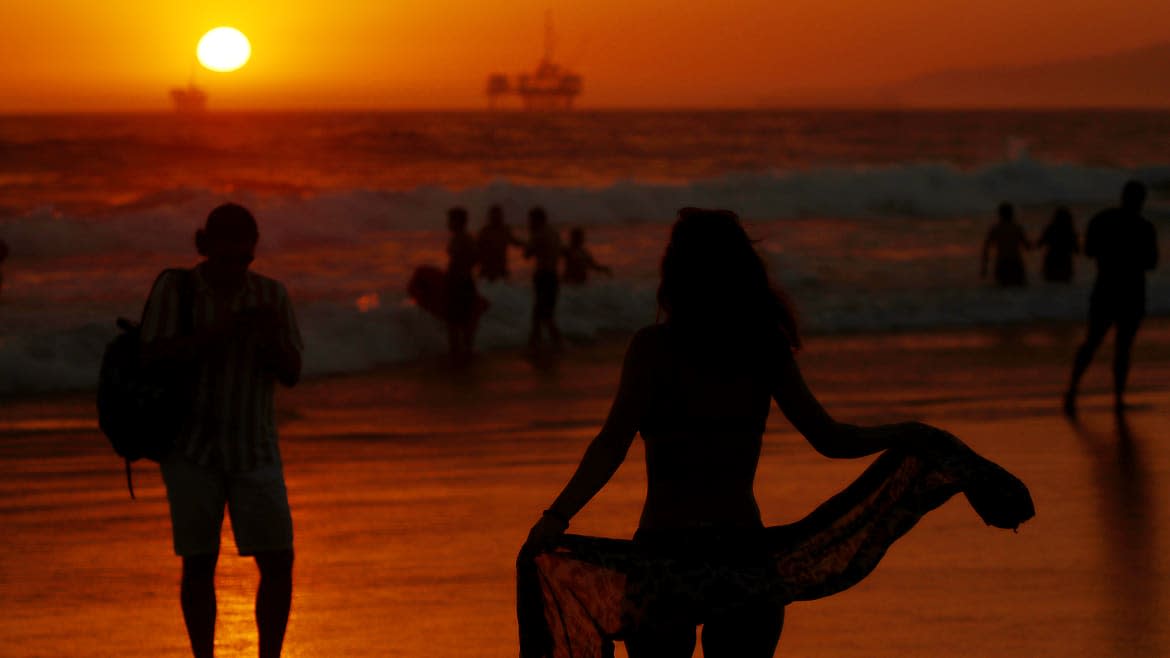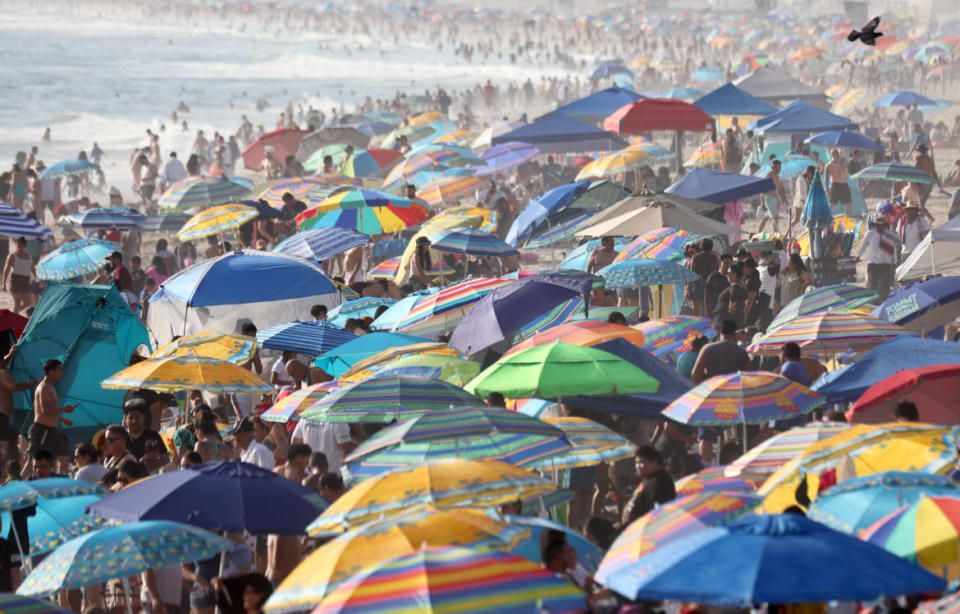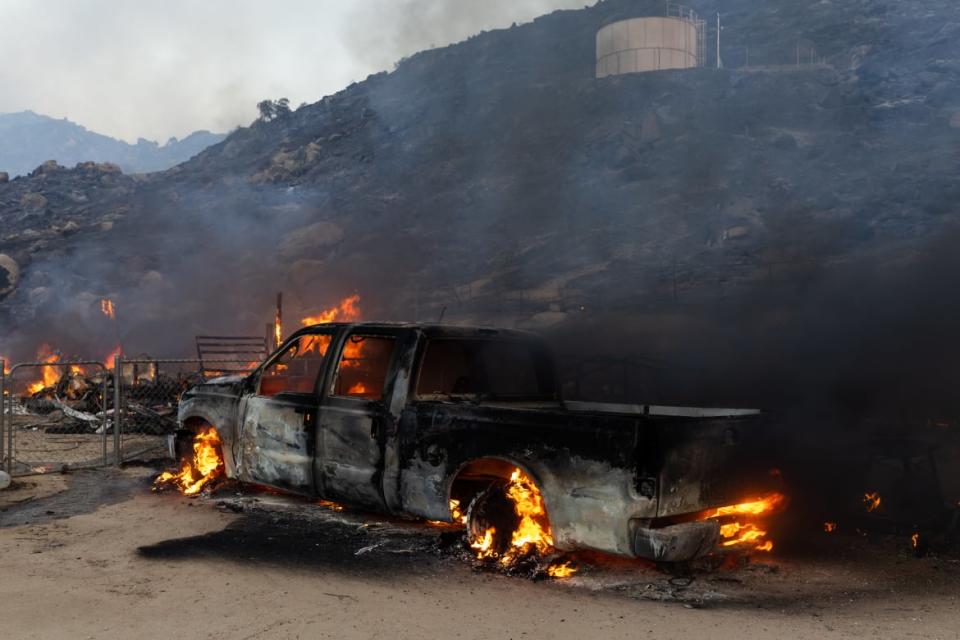California’s Hellish ‘Heat Dome’ Turns the Bay Area Into an Oven

A historically brutal heat wave has pushed high temperatures in suburban San Francisco, often spared from extreme heat because of its coastal location, to be as scorching as the hottest place on earth Tuesday.
The East Bay community of Danville, 30 miles east of San Francisco, was forecast to reach 120 degrees on Tuesday, the National Weather Service said. That’s just six degrees below the forecast for Death Valley in southern California, which has registered record-heat for September itself this week.
The blistering heat, which spans the whole state but has hit northern California hardest, has forced officials to beg residents to conserve energy. If not, authorities say they’ll be forced to inflict rotating electricity blackouts—a dangerous possibility as a majority of California's 39 million residents face high temperatures of at least 90 degrees on Tuesday.
The state’s strained electrical grid is expected to use 51,033 megawatts Tuesday afternoon, easily surpassing its previous record of 50,270 megawatts set in 2006, the grid’s operator Elliot Mainzer said Monday.
Forecasted demand was likely to surpass energy available from the grid on Tuesday, suggesting blackouts would soon be needed. “California ISO is explicitly forecasting demand to exceed energy availability this afternoon,” tweeted Washington Post Meteorologist Matthew Cappucci. “In other words, the state will run out of power.”

Santa Monica beach was the place to be as a heat wave scorched California over the weekend.
In order to avoid blackouts, Mainzer said there needed to be a reduction in energy use that is “two or three times greater” than what had previously been ordered over the weekend. That’s a tough ask when temperatures are at an all-time high, and residents were already limiting AC usage between 5 and 9 p.m. each day.
“We never want to get to that point, of course, but we want everyone to be prepared and understand what is at stake,” Mainzer said in a statement.
Just how hot is it? The state’s capital, Sacramento, is forecast to reach a record-high of 115 on Tuesday. That temperature would shatter the city’s previous monthly record of 109, which has been eclipsed each day this month.
In San Francisco itself, meanwhile, the high Tuesday was forecast to be 99—27 degrees higher than the city’s average high for a September day. Way to the south, San Diego tied its all-time warmest low temperature on record on Sunday, when the typically-temperate city fell to just 78 degrees. Los Angeles, meanwhile, has a high of 95 on Tuesday.
“It seems like they all have the same story: ‘We are living in our cars, and it’s like living in an oven,’” Marina Calderon, who was working at a public cooling center in the Bay Area on Monday, told the San Francisco Chronicle.
Can We ‘Hack’ Our Bodies to Resist Heat Waves?
California has so far avoided total catastrophe akin to the heat wave that struck the Pacific Northwest last summer, which killed nearly 200 people in Oregon and Washington. But the current heat wave is far from over, scientists warn, and it could still be deadly.
“Extreme heat will significantly increase the potential for heat related illnesses, particularly for those working or participating in outdoor activities,” the weather service wrote in a bulletin. “Very high risk of heat stress or illness for the entire population.”
The heat itself isn’t the only thing officials are worried about. A historic drought has also rocked much of California, setting off a string of wildfires with no reprieve from rain expected this week.
One of those fires, the Mill Fire, killed two people on Friday and injured three others when it quickly tore through a historically Black community in Weed, California, a town of 2,500 in Siskiyou County.
Weed Mayor Kim Greene was at a community center when someone ran inside and shouted that a fire had started across the street, she told the Los Angeles Times. In the time it took her to reach the parking lot, she said the fire had jumped the street and was racing toward a neighborhood, eventually leveling it.
“Most of the community of Lincoln Heights is gone,” Greene said Saturday. “Wildfire is no longer in the wilderness. It’s right inside the city limits.”

A vehicle burned by the raging Fairview Fire.
Another two people were killed Monday in the Fairview Fire, which engulfed woodland and homes 75 miles southeast of Los Angeles in Riverside County. Both fires continued to burn on Tuesday morning, Cal Fire said, and red-flag warnings remain in place for the entire state.
Washington Post meteorologists say this week’s heat wave and increased fire risk are due to a “heat dome” that’s hovered over the state. This dome has pushed all cloud cover and rain away, while trapping heat and sunshine inside. This has caused the Golden State to bake. Literally.
Scientists in California warn that extreme heat in the state is becoming increasingly more common, with climate change as the culprit.
“Climate change is making heat waves more intense, more frequent, more persistent, and spatially larger—just about any characteristic you could use to describe them,” Daniel Swain, a climate scientist at UCLA, told the Chronicle. “Climate change is upping the ante.”
While likely the most noteworthy, California wasn’t the only place to experience record heat this week.
Hotter-than-usual weather has been present across the country, with federal meteorologists reporting that 1,141 warm-weather records were set in the United States the last week compared to just 36 cold records.
Get the Daily Beast's biggest scoops and scandals delivered right to your inbox. Sign up now.
Stay informed and gain unlimited access to the Daily Beast's unmatched reporting. Subscribe now.

